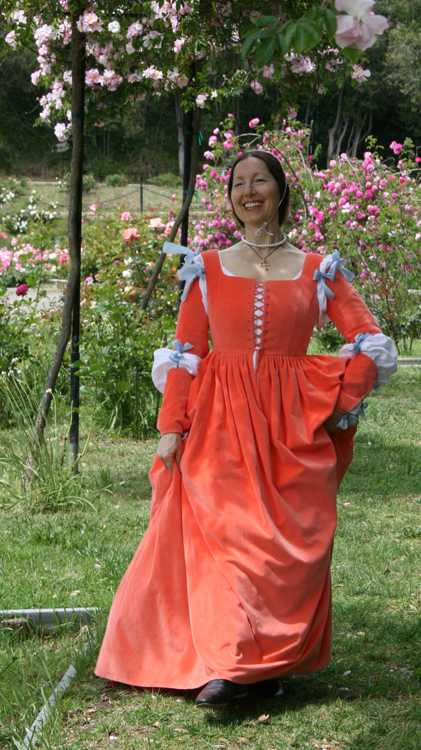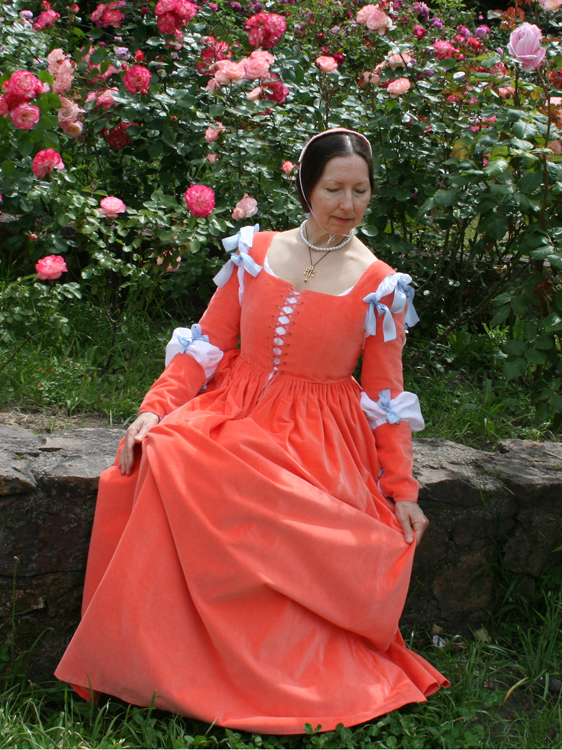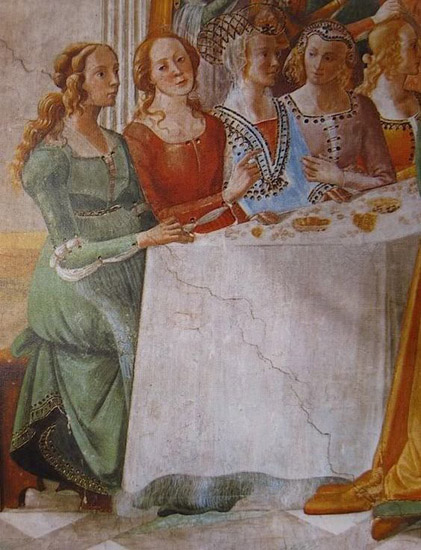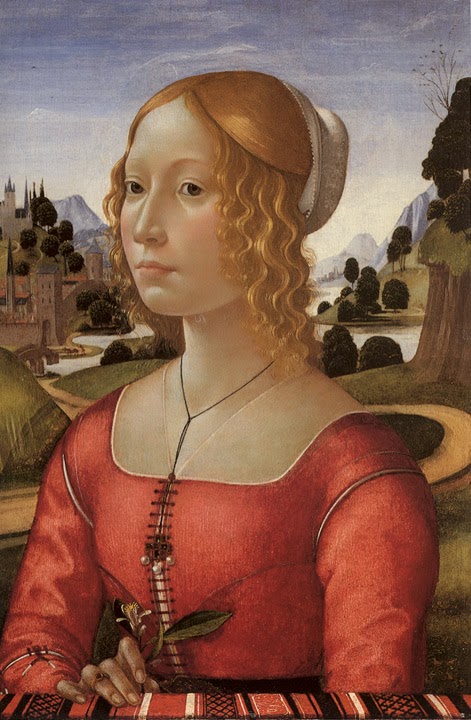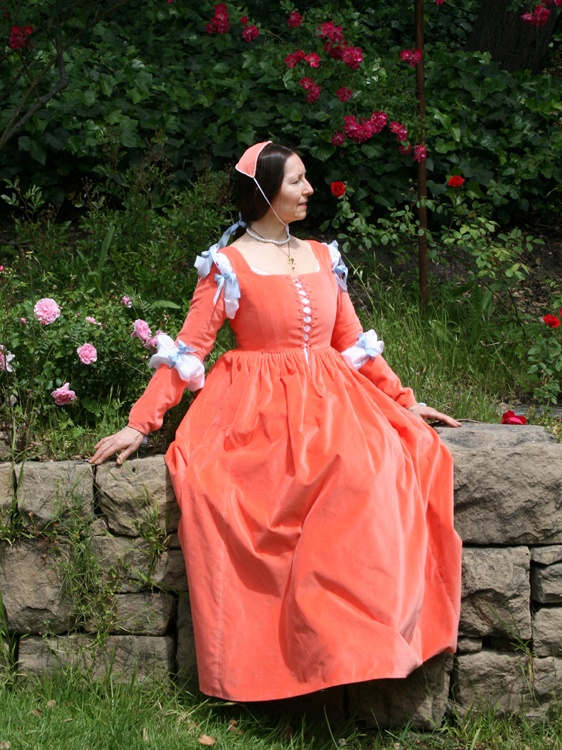
I’d like to have a whole wardrobe of costumes suitable for early dance, but this is a good place to start. Dancing aside, a 1480s Italian gamurra has been in the sewing queue for some time. A few years back I even made a 1490 servant outfit as a test garment. This gamurra uses the same basic bodice pattern and even has a similar color scheme (salmon and blue). But it’s a fancy version. A country mouse and a city mouse.
The bodice pattern, as I mentioned, is the same one used for the wool 1490 servant. It’s cut with a curved front seam, a side back seam, and a fashionably raised waistline. The construction is similar too — a single spiral steel supports center front, and the rest is boned in cable ties. I was happy to find a perfectly color-matched, 1/4″ wide petersham ribbon to lace the dress closed.
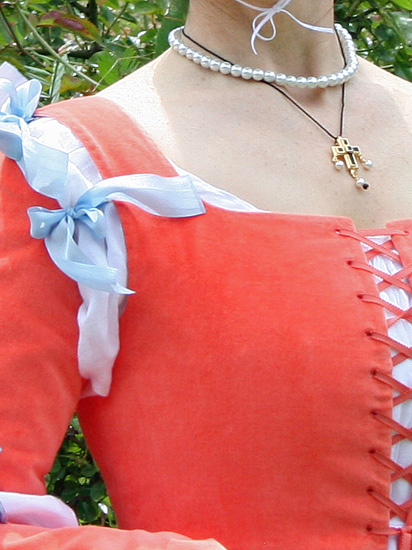
For durability, I decided to make the gown in cotton velveteen. Velveteen is a big pain to sew. It can also get quite heavy, given the amount of yardage needed. However, a modest 120″ hem, combined with a gored waistline, kept the dress fairly light weight. The skirt has a slit opening at center front. Portraits sometimes show this opening with the chemise showing through, but I had a feeling this would read as a mistake to the modern eye. So a single hook keeps it from gapping. If the dress had any more of a lacing gap, the hook would have to be undone for the skirt to hang properly. The skirt is floor length, with a very slight train in the back (assuming a few extra inches can be called a train). As anyone who’s worn a full-length, trained skirt knows, this can be a tripping hazard. I haven’t attempted to actually dance in it yet. At least, not without holding the skirt well out of harm’s way. But l’ll figure it out. 15thC Italian ballos are so charming that a little extra challenge in the costume-wearing department is justified.
Though I think of this costume as a Florentine, in reality I looked at artwork from all over Italy. Some of those images have been assembled into a hodge-podge gallery below, Italian Dress 1480s – 1490s. My Florentine Dress gallery, used to make the 1490 wool dress, is also linked.
The two-part sleeves are based on both Florentine and Venetian images. Each sleeve ties at 10 points, through 20 eyelets, with wide, china silk ribbons. These ribbons are flimsy and won’t last long, but are an affordable option. The sleeve attachment process is a task in and of itself. It takes a good while to tie those bows neatly, and then fuss with the bunched up linen so that it’s properly poofing through the gaps. However, I can successfully dress myself. If the gamurra sleeves’ bows are completely tied, the entire dress can be slipped on at once. The wrist tie is left open; actually, one still needs help with this final step. The camicia worn here is from my 1550s Venetian project.
My Juliet cap is conjecture. I’ve long admired the various recreations of a well-known reta in Cappella Tornabuoni’s, Birth of Mary. Mine has the same general shape, but is made of fabric. It’s based on examples of matching caps in 15thC artwork. For instance, the pink cap worn with the pink dress, in the image above. The cap is edged all around with tiny pearls, and ties under the chin. The Birth of Mary reta and white caps from this period are shown tied this way. But for security I added a single wig clip. Final accessories included a necklace strung of large glass pearls, and a lovely cross from Raymond’s Quiet Press.

